Top 18 Ayurvedic Herbs That Every Woman Should Take
Ayurveda, the ancient system of Indian herbal medicine, is deeply rooted in the belief that health is a balance between mind, body, and spirit, with each person being uniquely connected to nature. It emphasizes the use of natural herbs, plants, and formulations to restore harmony within the body. 
For women, Ayurveda offers a wealth of herbal remedies to support reproductive health, balance hormones, alleviate menstrual issues, and address the various changes throughout different life stages, such as menstruation, pregnancy, and menopause.
Why Ayurveda Works for Women
Ayurveda considers women’s health as closely linked to nature, recognizing the unique rhythms of the female body. The practices and treatments in Ayurveda focus on aligning a woman’s physical, emotional, and spiritual states with the natural cycles, thus encouraging healing in a holistic and balanced way. Women often respond well to Ayurvedic treatments because they are personalized and tailored to their unique constitution (dosha) and life stage.
Charaka Samhita: A Key Source for Women’s Health
The Charaka Samhita, one of the oldest and most important texts in Ayurvedic medicine, is a key source of knowledge on treating health conditions, especially concerning women. It deals primarily with internal medicine and outlines various remedies, including herbal treatments, that can improve women’s health. The Charaka Samhita divides herbs into categories based on their medicinal properties and their ability to treat specific conditions.
In the Charaka Samhita, there are several specific groups of herbs that are mentioned for improving women’s health. These herbs are detailed with descriptions on their properties, how they can be used individually or in combination, and how they can help restore balance and harmony in the body.
Recommended Calorie Intake for Women
The number of calories a woman needs to consume depends on several factors such as age, height, weight, and activity level. Caloric needs also vary depending on whether a woman is aiming to maintain, lose, or gain weight. However, general guidelines can help provide a starting point for understanding how many calories are needed for different age groups and lifestyles.
Calorie Intake Based on Age and Activity Level
Women Aged 25–50:
- Sedentary Lifestyle (little or no exercise): About 1,800–2,000 calories per day.
- Moderately Active Lifestyle (engages in moderate physical activity such as walking or light exercise): About 2,000–2,200 calories per day.
- Active Lifestyle (engages in vigorous physical activity such as running, strength training, or heavy physical work): About 2,200–2,400 calories per day.
Why These Ranges Matter
- Sedentary: This level is for women who do not engage in regular physical activity. It’s the minimum number of calories needed to maintain a basic, inactive lifestyle.
- Moderately Active: This range applies to women who get some form of exercise (like walking, yoga, or light exercise) but not every day.
- Active: Women who are highly active with regular exercise or physically demanding jobs require more calories to fuel their bodies and support higher energy expenditure.
Calorie Needs According to Specific Goals
- To Maintain Weight: A woman between 25 to 50 years old generally needs around 2,000 to 2,200 calories per day to maintain her current weight, assuming moderate activity levels.
- To Lose Weight: To lose weight safely, a calorie deficit is required. This typically means consuming fewer calories than your body burns. A woman may need to reduce her intake by 300 to 500 calories a day (i.e., aiming for about 1,500–1,800 calories per day for weight loss) while still ensuring nutrient-dense foods to meet essential vitamin and mineral needs.
- To Gain Weight: For weight gain, an increase in calorie intake is necessary. Adding around 500 calories per day (such as aiming for 2,500 calories per day) can help facilitate gradual, healthy weight gain, especially when combined with strength training to build muscle.
Factors Influencing Calorie Needs
1. Age: As women age, metabolic rate generally decreases, meaning calorie needs may slightly reduce with age. However, this can be countered with physical activity and strength training to maintain muscle mass.
4. Height and Weight: Taller women and those with more muscle mass generally require more calories to maintain their weight, while shorter women may need fewer calories.
5. Activity Level: Exercise plays a huge role in determining daily calorie requirements. The more active a woman is, the more energy her body needs to maintain and support that activity.
6. Health Conditions and Pregnancy: Certain health conditions or pregnancy can affect calorie needs. For instance, pregnant or breastfeeding women need additional calories to support the growing fetus or milk production.
Nutritional Considerations
While meeting calorie goals is essential, it’s equally important to focus on the quality of calories consumed. A balanced diet should consist of:
- Protein: To maintain muscle mass, support metabolism, and promote satiety.
- Fiber: To support digestive health, stabilize blood sugar, and help control appetite.
- Healthy Fats: For hormone production, brain function, and cell health.
- Vitamins and Minerals: Crucial for overall health, including bone strength, immune function, and energy levels.
Dietary Needs for Women After 40 According to Ayurveda
As women age, particularly after the age of 40, their bodies go through significant hormonal changes that can affect metabolism, energy levels, and overall health. Ayurveda, the ancient system of holistic healing, emphasizes the importance of balancing the body’s energies (known as doshas) through diet and lifestyle. After 40, a woman must pay closer attention to her dietary habits to manage the hormonal fluctuations and maintain optimal health.
Why the Change is Necessary After 40
- Hormonal Imbalance: As a woman approaches menopause, the production of key hormones like estrogen and progesterone begins to decline. This can lead to symptoms such as weight gain, mood swings, sleep disturbances, and more.
- Slowed Metabolism: With age, metabolism tends to slow down. If diet and lifestyle are not adapted to this change, it can lead to unwanted weight gain and an increased risk of chronic conditions like diabetes and heart disease.
- Nutrient Deficiency: With aging, nutrient absorption may decrease, leading to deficiencies in important vitamins and minerals, such as calcium, vitamin D, and B vitamins, all of which are crucial for bone health, energy, and overall well-being.
Ayurvedic Dietary Guidelines for Women Over 40
Control Fat and Carbohydrate Intake
- Why: After 40, your body may struggle to process fats and carbohydrates as efficiently as before, leading to weight gain and sluggish digestion.
- Ayurvedic Approach: According to Ayurveda, the Pitta dosha (responsible for metabolism) tends to become aggravated as a woman age, especially if she consumes too many heavy, fatty, and sugary foods.
- What to Do: Reduce the intake of refined carbs (like white bread, and pastries) and saturated fats. Opt for whole grains (such as quinoa, barley, and brown rice) and healthy fats (like olive oil, ghee, and avocados).
Incorporate More Fiber
- Why: Fiber aids digestion, promotes regular bowel movements and helps maintain a healthy weight. As metabolism slows, constipation can become a common issue.
- Ayurvedic Approach: Ayurveda emphasizes the importance of proper digestion, or “Agni.” By supporting digestive fire, you ensure better absorption of nutrients.
- What to Do: Include high-fiber foods like vegetables, fruits (especially apples, pears, and berries), legumes (lentils, chickpeas), and seeds (flaxseeds, chia seeds). These foods also help stabilize blood sugar levels and improve overall digestion.
1. Ensure Adequate Protein Intake
- Why: Protein is essential for muscle maintenance, repair, and immune function. After 40, muscle mass naturally declines, and protein needs become more critical.
- Ayurvedic Approach: Protein helps balance the Vata dosha, which can become aggravated during this stage of life, leading to dryness, fatigue, and joint discomfort.
- What to Do: Include lean proteins like beans, legumes, tofu, fish, and eggs. Additionally, incorporating Ayurvedic spices like turmeric and ginger can further support the digestive process and protein absorption.
2. Focus on Bone Health (Calcium and Vitamin D)
- Why: Bone density decreases with age, particularly after menopause, due to reduced estrogen levels. This increases the risk of osteoporosis and fractures.
- Ayurvedic Approach: Ayurveda places great importance on nourishing the bones with grounding, nourishing foods. Calcium and vitamin D are crucial for bone strength.
- What to Do: Consume calcium-rich foods like leafy greens (spinach, kale), sesame seeds, almonds, and dairy products. Sun exposure is also important for vitamin D, so aim for at least 15-20 minutes of sunlight daily.
3. Incorporate Anti-Inflammatory Foods
- Why: Chronic inflammation becomes more prevalent with age, leading to conditions like arthritis and cardiovascular disease.
- Ayurvedic Approach: Inflammation is linked to an imbalance of Pitta dosha. Cooling, anti-inflammatory foods are recommended to balance this.
- What to Do: Include turmeric, ginger, garlic, and green leafy vegetables in your diet. These foods help combat inflammation, support joint health, and boost overall vitality.
4. Hydration is Key
- Why: As women age, the body’s ability to retain moisture declines, leading to dry skin, dehydration, and fatigue.
- Ayurvedic Approach: Proper hydration helps balance the Vata dosha, which is associated with dryness and irregularity.
- What to Do: Drink plenty of warm water throughout the day. Ayurvedic herbal teas, such as chamomile or ginger tea, can also aid digestion and hydration.
5. Avoid Heavy or Late-Night Meals
- Why: Late-night eating or consuming heavy meals strains the digestive system, especially as digestion slows with age.
- Ayurvedic Approach: Ayurveda advises eating your largest meal at lunchtime, when the digestive fire (Agni) is strongest. This promotes better digestion and absorption of nutrients.
- What to Do: Opt for lighter meals in the evening, focusing on easily digestible foods like soups, stews, and light vegetables.
6. Mindful Eating and Lifestyle
- Why: Emotional stress, irregular eating habits, and poor sleep patterns can exacerbate hormonal imbalances.
- Ayurvedic Approach: Ayurveda emphasizes mindful eating, where meals are eaten slowly and without distraction, allowing the body to fully absorb and digest the food.
- What to Do: Practice eating in a calm environment, chew your food thoroughly, and avoid multitasking while eating. Also, prioritize regular sleep to support hormone balance.
Key Nutrients to Focus On After 40
- Calcium: Vital for maintaining bone density.
- Magnesium: Helps with muscle function, bone health, and managing stress.
- Vitamin D: Supports calcium absorption and bone health.
- B Vitamins: Crucial for energy metabolism and hormonal balance.
- Omega-3 Fatty Acids: Reduce inflammation and support heart health.
List of Ayurvedic Herbs for Women’s Health
Herbs have been used for centuries to support women’s health and well-being. Many Ayurvedic and traditional medicinal systems recommend specific herbs to address the unique health needs of women at various life stages, from menstruation to pregnancy, menopause, and beyond. Here’s a list of beneficial herbs that can help women maintain hormonal balance, support reproductive health, and enhance overall wellness.
1. Shatavari (Asparagus racemosus)
- Benefits: Shatavari is considered the “queen of herbs” for women, especially known for its ability to balance hormones, enhance fertility, and support lactation. It is also used to reduce symptoms of PMS and menopause.
- Uses: Helps in maintaining a healthy reproductive system, promoting milk production, and improving overall vitality.
2. Ashwagandha (Withania somnifera)
- Benefits: Ashwagandha is an adaptogenic herb that helps the body handle stress, boosts energy, and supports hormonal balance. It can be helpful for women dealing with anxiety, fatigue, and menopausal symptoms.
- Uses: Improves mood, strengthens the immune system, and helps maintain vitality.
3. Black Cohosh (Actaea racemosa)
- Benefits: Commonly used for managing menopause symptoms such as hot flashes, night sweats, and mood swings. It is believed to have estrogen-like effects.
- Uses: Helps reduce menopausal symptoms, improves mood, and supports hormonal balance.
4. Red Clover (Trifolium pratense)
- Benefits: Rich in phytoestrogens, red clover can help balance hormones during menopause and reduce symptoms like hot flashes. It is also beneficial for bone health.
- Uses: Supports cardiovascular health, balances hormones, and promotes skin health.
5. Dong Quai (Angelica sinensis)
- Benefits: Known as the “female ginseng,” Dong Quai is traditionally used in Chinese medicine to regulate menstrual cycles, reduce cramps, and promote overall reproductive health.
- Uses: Helps with menstrual irregularities, alleviates cramps, and boosts energy levels.
6. Vitex (Chaste Tree Berry) (Vitex agnus-castus)
- Benefits: Vitex is highly regarded for its ability to regulate the menstrual cycle and support hormonal balance, particularly by stimulating the pituitary gland to increase progesterone levels.
- Uses: Eases PMS symptoms, regulates periods, and can help with fertility issues.
7. Holy Basil (Tulsi) (Ocimum sanctum)
- Benefits: Known for its adaptogenic properties, Holy Basil helps the body cope with stress, boosts immunity, and supports hormonal health. It also helps reduce inflammation and improves mood.
- Uses: Reduces stress and anxiety, supports thyroid function, and helps with menstrual irregularities.
8. Maca Root (Lepidium meyenii)
- Benefits: Maca is an adaptogen that supports energy, stamina, and hormonal balance. It is especially useful for women experiencing hormonal fluctuations due to PMS, perimenopause, or menopause.
- Uses: Enhances libido, reduces fatigue, and helps balance estrogen levels.
9. Red Raspberry Leaf (Rubus idaeus)
- Benefits: Red raspberry leaf is traditionally used to tone the uterus and support women’s reproductive health. It’s known for its ability to ease menstrual cramps and improve fertility.
- Uses: Supports menstrual health, strengthens the uterine muscles, and may help with pregnancy preparation.
10. Licorice Root (Glycyrrhiza glabra)
- Benefits: Licorice root can help with hormone regulation, particularly in women experiencing hormonal imbalances such as low estrogen or high cortisol. It also supports the adrenal glands.
- Uses: Alleviates PMS symptoms, supports adrenal health, and reduces fatigue.
11. Evening Primrose Oil (Oenothera biennis)
- Benefits: Rich in gamma-linolenic acid (GLA), Evening Primrose Oil is known to support hormonal balance, reduce PMS symptoms, and improve skin health.
- Uses: Reduces breast tenderness, alleviates PMS, and promotes skin health, especially for women with dry skin or eczema.
12. Fennel (Foeniculum vulgare)
- Benefits: Fennel is known for its ability to support the digestive system, reduce bloating, and help regulate menstrual cycles. It also has mild estrogen-like properties.
- Uses: Eases digestion, supports hormonal balance, and relieves menstrual discomfort.
13. Aloe Vera (Aloe barbadensis miller)
- Benefits: Aloe vera is a natural remedy for skin issues such as acne, dryness, and aging. It’s also used to support digestive health and boost immunity.
- Uses: Promotes healthy skin, aids digestion, and strengthens the immune system.
14. Calendula (Calendula officinalis)
- Benefits: Calendula is known for its anti-inflammatory, anti-fungal, and anti-bacterial properties. It’s particularly helpful for skin health and healing wounds.
- Uses: Soothes skin irritations, promotes healing, and supports the immune system.
15. Ginger (Zingiber officinale)
- Benefits: Ginger is a powerful anti-inflammatory herb that aids digestion and can alleviate menstrual cramps. It also supports circulation and reduces nausea.
- Uses: Eases nausea, relieves menstrual cramps, and supports overall digestion.
16. Motherwort (Leonurus cardiaca)
- Benefits: Motherwort is particularly helpful for managing stress, anxiety, and hormonal imbalances related to the menstrual cycle. It also helps support heart health.
- Uses: Calms the nervous system, reduces menstrual cramps, and helps regulate the menstrual cycle.
17. Pomegranate (Punica granatum)
- Benefits: Pomegranate is rich in antioxidants and phytoestrogens, making it excellent for skin health and hormonal balance. It’s also helpful in reducing the risk of cardiovascular disease.
- Uses: Supports heart health, improves skin elasticity, and balances hormones.
18. Angelica Root (Angelica archangelica)
- Benefits: Angelica root is often used for digestive issues and is a well-known remedy for women’s hormonal health, especially during menopause.
- Uses: Eases menstrual discomfort, alleviates menopausal symptoms, and supports digestion.
Herb Formulations and Uses in Ayurveda for Women
The Charaka Samhita outlines several combinations and formulations of herbs to address women’s health concerns. Some of the common ways these herbs are used include:
- Rasayanas (Rejuvenating Formulas): These are special herbal preparations aimed at revitalizing the body, mind, and spirit. They help rejuvenate tissues, boost energy, and slow down the aging process.
- Basti (Herbal Enemas): Used to detoxify the body, especially in the reproductive system, these are often recommended to balance the Vata dosha, which governs movement in the body.
- Churna (Herbal Powders): Various herbs are powdered and mixed to form a churna, which is typically taken with water or honey to treat specific health concerns.
- Lehyam (Herbal Pastes): These are thick herbal pastes that are taken orally to improve digestion, enhance immunity, and restore hormonal balance.
Ayurveda offers a wide range of herbs and remedies tailored to support the health and well-being of women. The Charaka Samhita is an essential text that highlights the importance of these herbs in maintaining a balanced life.





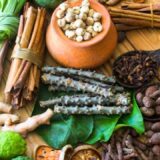
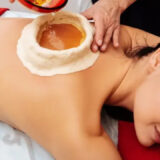

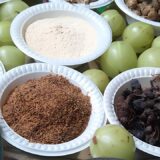









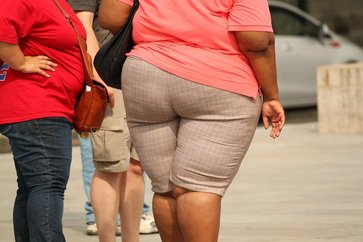
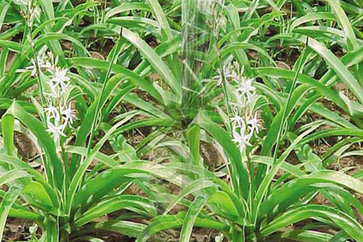






Prescription Pad is a clinic management software provides all types of facilities for hospitals & doctors.
The best part of the software is Prescription writing facilities for doctors & drug & brand interaction checker tool.